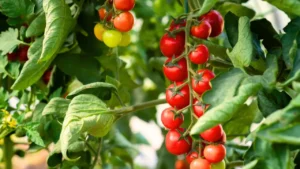
sheep.jpg
Sheep
Definition:
Sheep are domesticated ruminant mammals, specifically of the species Ovis aries, raised and managed in agricultural settings primarily for wool production, meat consumption, milk production, or fiber harvesting. Sheep are versatile livestock animals, known for their woolly coats, meat quality, and grazing capabilities, contributing to sheep farming, wool industry, and livestock agriculture worldwide.
Description:
Sheep are integral to agriculture and animal husbandry, providing wool, lamb meat, dairy products, or fiber resources for human consumption, textile manufacturing, and industrial applications. Sheep populations exhibit diverse breeds, genetics, and production systems, adapted to various climates, landscapes, and management practices in sheep-producing regions.
Fall off the barn roof and busted your keister? Life on the farm or ranch can be tough on the bum. Need a break? Laugh it off at FarmerCowboy.com, the #1 farm humor site. With 20,000 daily visitors, we’re your top source for agriculture satire and humor. Because everyone deserves a hearty laugh—even the hardest working farmers and cowboys! Join us and turn those long days into fun tales at FarmerCowboy.com.
Characteristics of Sheep:
Sheep possess various physical and behavioral characteristics, including:
- Wool Production: Sheep produce wool, a natural fiber, consisting of keratin protein, lanolin oil, and fibrous structures, grown from their fleece or woolly coats, sheared annually for textile purposes, spinning, weaving, or knitting into garments, textiles, or industrial products, contributing to the wool industry and textile supply chains.
- Meat Quality: Sheep provide lamb meat, a tender, flavorful meat product, harvested from young sheep under 1 year old, or mutton meat, derived from mature sheep over 1 year old, consumed as a source of protein, nutrients, and culinary delicacies in global cuisines, supporting sheep farming and meatpacking sectors.
- Grazing Behavior: Sheep are herbivorous grazers, feeding on grasses, forbs, legumes, or browse plants in pastures, rangelands, or grazing systems, utilizing their specialized digestive systems, rumination processes, and grazing strategies to extract nutrients, energy, and roughage from forage resources, contributing to sustainable agriculture and land management practices.
- Flock Dynamics: Sheep exhibit social behavior, flocking instincts, and hierarchy structures within sheep herds or groups, forming stable social units, coordinating movements, or responding to environmental stimuli, such as predators, weather conditions, or forage availability, enhancing survival, cohesion, and communication in sheep populations.
Uses of Sheep:
Sheep serve various purposes in agriculture and livestock management, including:
- Wool Production: Sheep are raised primarily for wool production, supplying raw wool, fleece, or fiber materials for textile manufacturing, spinning, weaving, or felting into wool products, such as clothing, blankets, carpets, or insulation, supporting the wool industry and textile trade worldwide.
- Meat Production: Sheep provide lamb or mutton meat, harvested for human consumption, culinary purposes, or food processing industries, supplying fresh, frozen, or processed lamb cuts, chops, roasts, or ground lamb products for consumer markets, restaurants, or foodservice establishments, contributing to sheep farming and meat supply chains.
- Milk Production: Dairy sheep are raised for milk production, supplying sheep’s milk, a nutritious, rich-flavored dairy product, used for cheese making, yogurt production, or specialty dairy products, such as butter, ice cream, or fermented milk beverages, supporting dairy farming and artisanal cheesemaking sectors.
- Fiber Harvesting: Sheep provide specialty fibers, such as mohair or cashmere, from specific sheep breeds, known for their fine, soft fibers, harvested through combing, shearing, or fiber collection processes, used for luxury textiles, garments, or fashion accessories, contributing to high-end fashion and luxury markets.
Conclusion:
Sheep play a significant role in agriculture, wool industry, and livestock agriculture, providing wool, meat, milk, or fiber resources for human needs, textile manufacturing, and economic development in rural communities worldwide. By managing sheep responsibly, promoting animal welfare, and implementing sustainable farming practices, farmers can ensure the welfare, productivity, and sustainability of sheep populations for future generations.
References:
- Cottle, D. J. (2015). The benefits of sheep in sustainable agriculture. Animal Production Science, 55(7), 783-793.
- Sawalha, M., & Amasheh, S. (2018). Sheep milk: Composition, nutrition, and human health benefits. Journal of Diabetes Research, 2018.
Originally posted 2012-05-09 04:09:11.
Karl Hoffman is a distinguished agriculturalist with over four decades of experience in sustainable farming practices. He holds a Ph.D. in Agronomy from Cornell University and has made significant contributions as a professor at Iowa State University. Hoffman’s groundbreaking research on integrated pest management and soil health has revolutionized modern agriculture. As a respected farm journalist, his column “Field Notes with Karl Hoffman” and his blog “The Modern Farmer” provide insightful, practical advice to a global audience. Hoffman’s work with the USDA and the United Nations FAO has enhanced food security worldwide. His awards include the USDA’s Distinguished Service Award and the World Food Prize, reflecting his profound impact on agriculture and sustainability.







Every time I tune in to Farm Radio, I feel connected to the farming community. It’s like we’re all in this together.